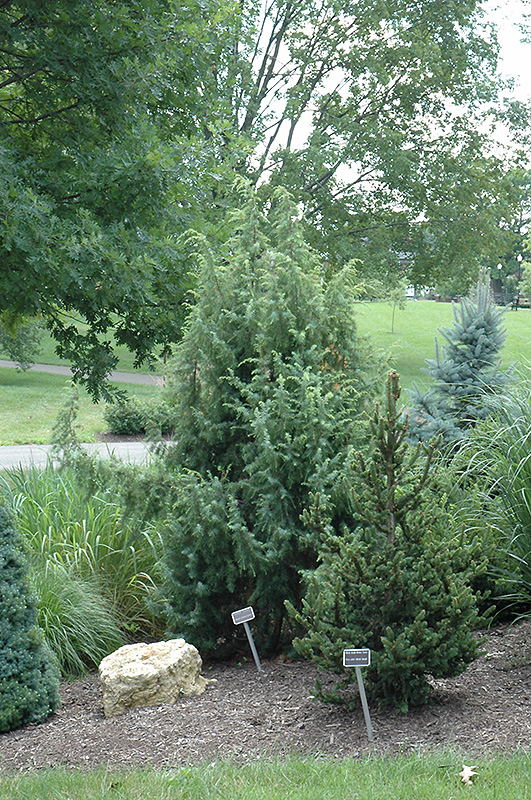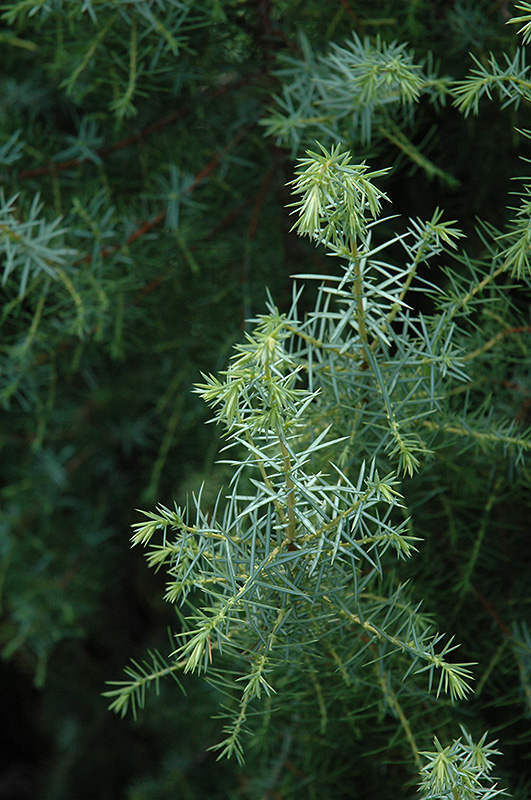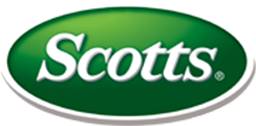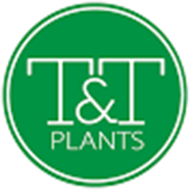Kalebab Juniper*
Juniperus communis 'Kalebab'
* This is a "special order" plant - contact store for details
Height: 15 feet
Spread: 8 feet
Sunlight:
![]()
Hardiness Zone: 3
Description:
A fine upright spreading juniper with narrow, white topped, light green foliage that makes the plant shine; a beautiful specimen for adding to the landscape or to enhance the skyline of your garden, exceptionally hardy
Ornamental Features
Kalebab Juniper is a dwarf conifer which is primarily valued in the landscape for its ornamental upright and spreading habit of growth. It has attractive white foliage with light green undersides. The needles are highly ornamental and turn an outstanding coppery-bronze in the fall, which persists throughout the winter. It produces blue berries from late spring to late winter.
Landscape Attributes
Kalebab Juniper is a dense multi-stemmed evergreen shrub with an upright spreading habit of growth. It lends an extremely fine and delicate texture to the landscape composition which can make it a great accent feature on this basis alone.
This is a relatively low maintenance shrub, and is best pruned in late winter once the threat of extreme cold has passed. It has no significant negative characteristics.
Kalebab Juniper is recommended for the following landscape applications;
- Accent
- Vertical Accent
- General Garden Use
Planting & Growing
Kalebab Juniper will grow to be about 15 feet tall at maturity, with a spread of 8 feet. It has a low canopy, and is suitable for planting under power lines. It grows at a medium rate, and under ideal conditions can be expected to live for approximately 30 years.
This shrub should only be grown in full sunlight. It is very adaptable to both dry and moist growing conditions, but will not tolerate any standing water. It is considered to be drought-tolerant, and thus makes an ideal choice for xeriscaping or the moisture-conserving landscape. It is not particular as to soil type or pH. It is highly tolerant of urban pollution and will even thrive in inner city environments. This is a selection of a native North American species.
* This is a "special order" plant - contact store for details








